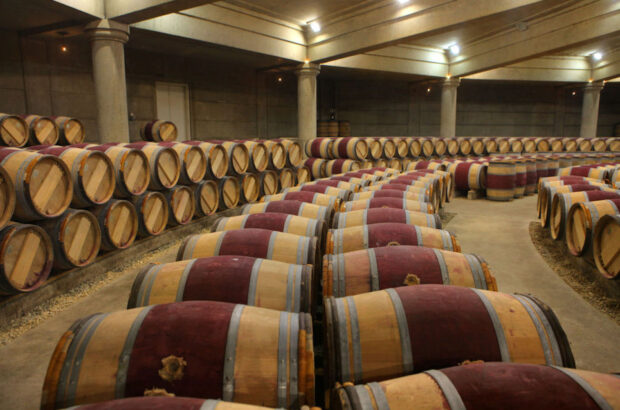Bordeaux lovers packed the room at the Ritz-Carlton in Pudong to hear Jean-Charles Cazes and sister Marie give a Château Lynch-Bages masterclass and talk about some of his favourite vintages, at the Decanter Shanghai Fine Wine Encounter.
Château Lynch-Bages masterclass
Jean-Charles Cazes introduced Domaines Cazes as a whole before focusing on St Estèphe property Les Ormes de Pez (the Cru Bourgeois estate in the Cazes family since 1940), followed by some revealing vintages of Lynch-Bages.
Les Ormes de Pez
Noting how St. Estèphe is ‘on the limit of producing ripe Cabernet Sauvignon’, Cazes described the 2010 Ormes de Pez as showing ‘perfect ripeness’ with ‘lots of alcohol, tannin and acidity’ characteristic of the vintage.
The 2005, meanwhile, showed ‘similar levels of acidity, but less tannin and slightly less alcohol’, Jean-Charles explained, suggesting it ‘has reached its maturity today.’
Ormes benefits from more Merlot than some other St. Estèphe, lending fruitiness to Cabernet Sauvignon’s starker structure, he added.
Pauillac: The ‘kingdom of Cabernet Sauvignon’
The history of Pauillac, from Michel Lynch’s role as mayor during the French Revolution through to the Cazes family’s involvement as bakers turned winemakers, moved centre-stage as Jean-Charles described the region as ‘the kingdom of Cabernet Sauvignon’.
Around 60% of Pauillac being planted to the variety.
Lynch-Bages wines
Starting with Lynch-Bages 2003, Jean-Charles recalled this ‘warm, quite extreme vintage’, resulting in a ‘round, supple … a gourmand’s wine’. This ‘sexy vintage’ of lower acidity is ‘today at its apogee’, he suggested.
Lynch-Bages 2005, however, emerged as a ‘perfectly balanced vintage, marked by freshness, liveliness of acidity and decent alcohol’. This complex, still brooding wine will repay those who can wait.
The 2006, by contrast, was never ‘as opulent as the 2005’ but a year dear to Jean-Charles Cazes personally who remarked ‘this was the first vintage for which I was entirely responsible’.
Years with similar sturdiness to 2005 concluded the tasting: Lynch-Bages 2010 being ‘a very powerful vintage comparable to 2009’, though not quite as alcoholic.
Cazes discussed their chemical similarities ‘and yet the profiles of 2009 and 2010 in the mouth are very different’, noting 2009’s fruitiness and slightly softer tannic structure.
The Lynch-Bages 2000 vintage proved a fitting finale. Jean-Charles said it was ‘one of the greatest vintages produced at Lynch-Bages’ and which he said had attained ‘a perfect balance’, which is still developing in bottle.
The full line-up of Château Lynch-Bages masterclass wines (in order of service):
- 2010 Ch. Ormes de Pez
- 2005 Ch. Ormes de Pez
- 2003 Ch. Lynch-Bages
- 2005 Ch. Lynch-Bages
- 2006 Ch. Lynch-Bages
- 2010 Ch. Lynch-Bages
- 2009 Ch. Lynch-Bages
- 2000 Ch. Lynch-Bages
See also:
- Decanter.com’s Bordeaux en primeur tasting note on Château Lynch-Bages 2014
- Château Mouton Rothschild masterclass in Shanghai offers taste of ‘perfect vintages’

Anson on Thursday: The surprising adventure of Lynch Bages in space

Lynch Bages trials tool to monitor wine inside barrels
Chateau Lynch Bages will be among the first to trial new technology that claims to help wineries better monitor what







